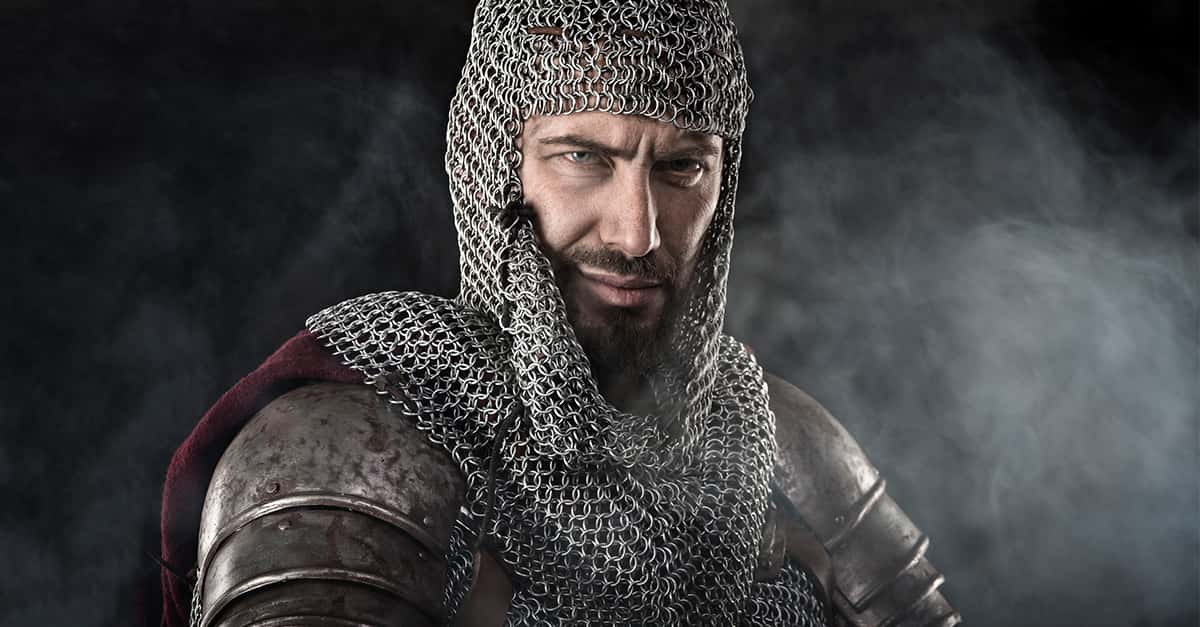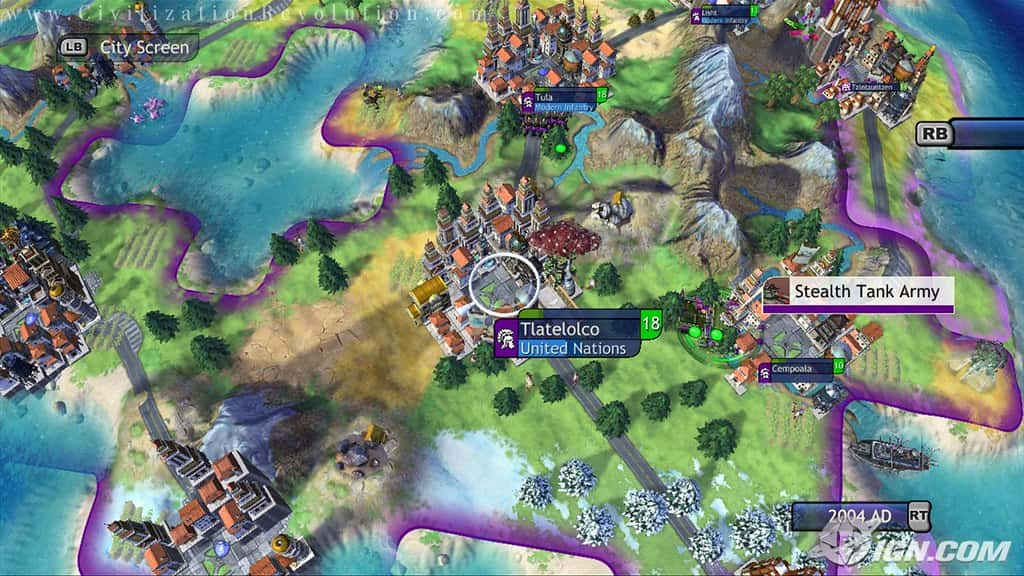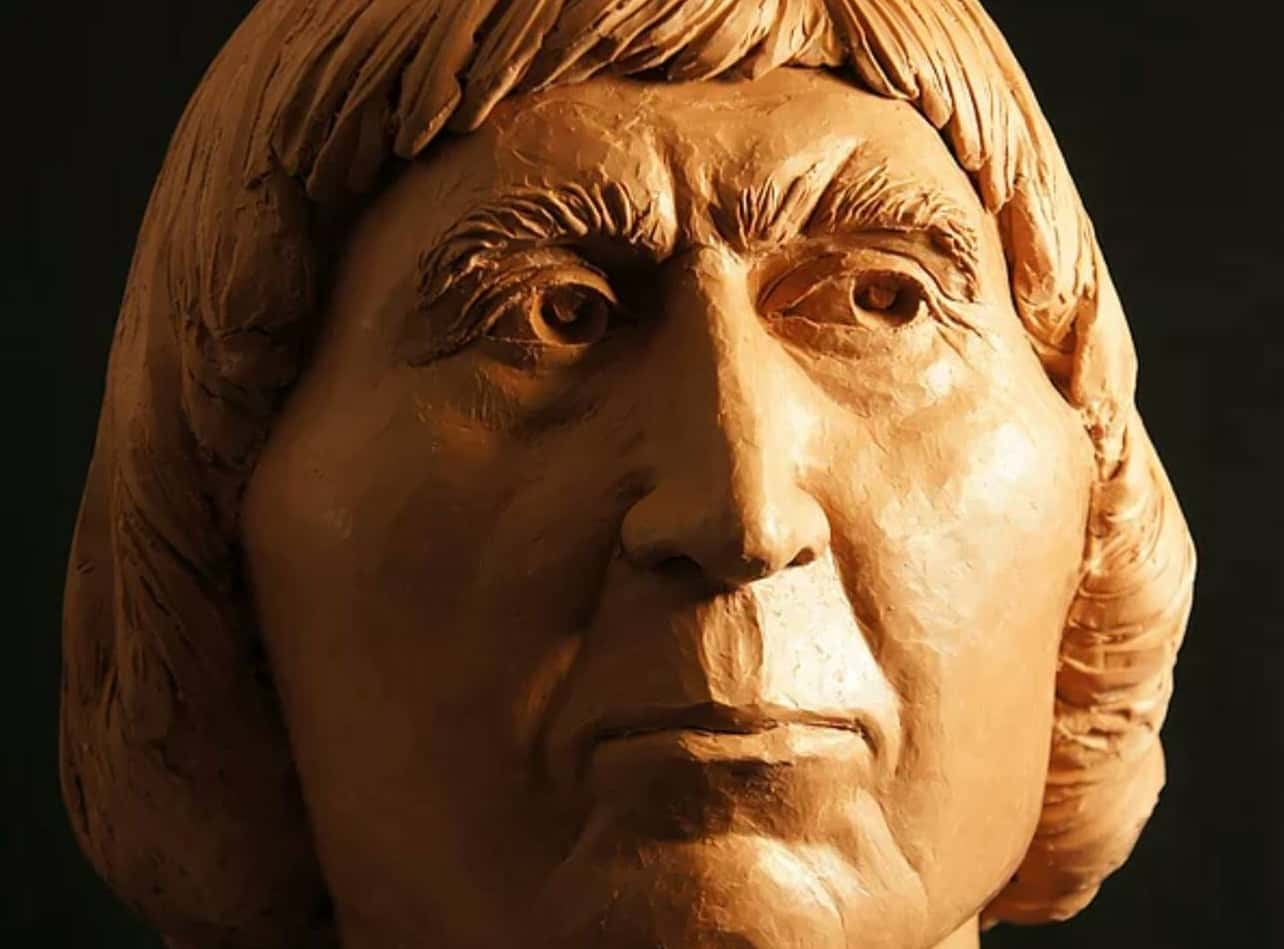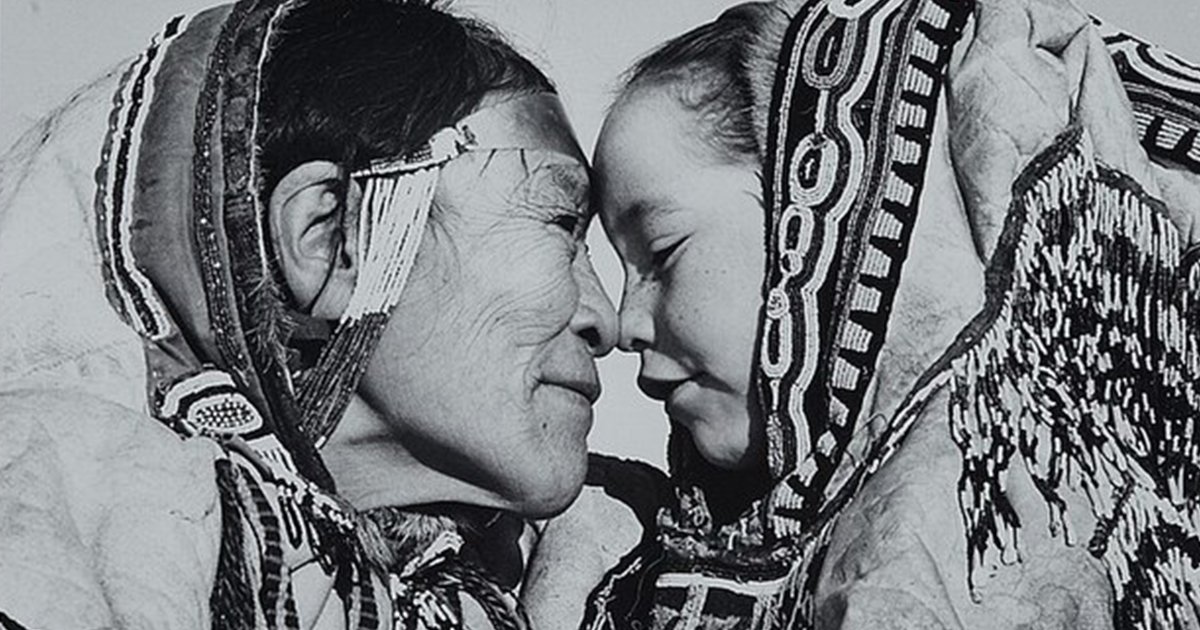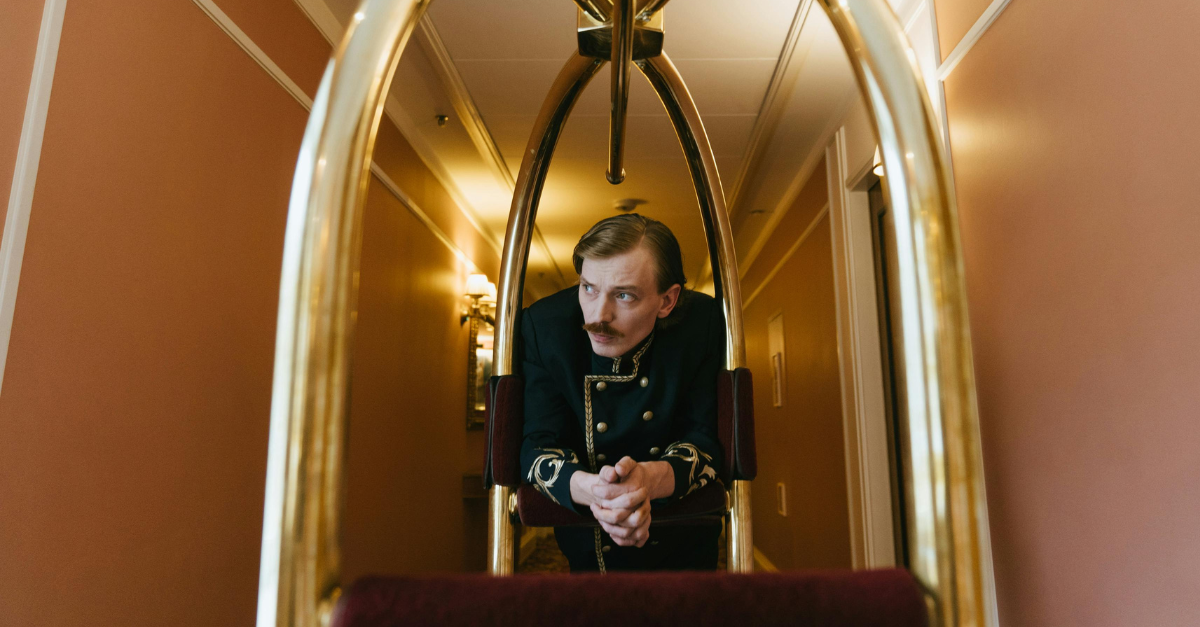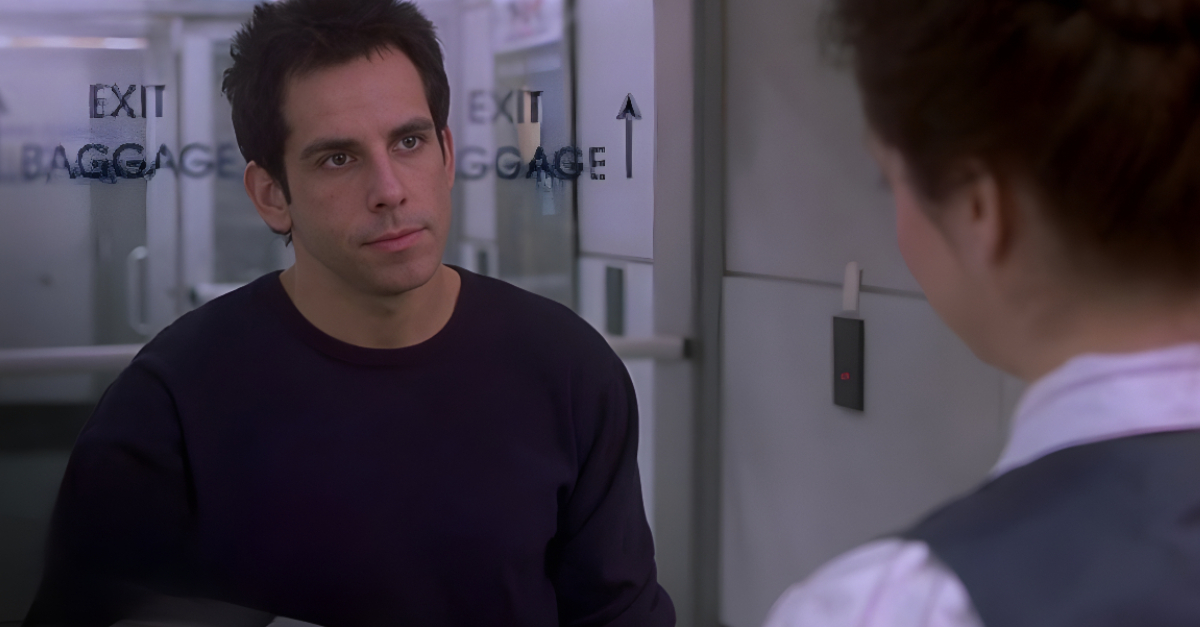As far as Scottish kings go, Robert the Bruce has always ranked very high. During his lifetime, he fought for Scottish independence from England, eventually gaining it after the Battle of Bannockburn. Of course, there’s always more to heroes than meets the eye, and Robert had a much shadier past than his supporters would have liked to admit. Read these facts about Robert the Bruce and learn about the man who became a legend.
1. The Many and Uncertain Kings
Bruce got into politics at a very early age, thanks to the deaths of King Alexander III of Scotland and his only child, Margaret. Several claimants rose among the nobles of Scotland, who saw their chance to become king. These included Robert Bruce, the 5th Lord of Annandale, and the grandfather of the Bruce. The other three major claimants were John Hastings, Count Floris V of Holland, and John Balliol. Things became so confused and heated that King Edward I of England was invited to step in as a mediator, given that his young son had been engaged to Margaret before her tragic end. Edward ruled in favor of Balliol and proceeded to involve himself in the affairs of Scotland to the point where he became their biggest enemy. Braveheart omits the part where Scotland’s own nobles created the perfect opportunity for Edward to sweep in and take charge.

2. Call Me the Bruce
Robert’s popular title of “the Bruce” comes from his ancestor, Robert de Brus, who was also the first Lord of Annandale after he arrived in Scotland in 1124 AD. The Bruce family would go on to play a large role in Scottish politics, culminating with Bruce becoming King Robert I.
3. Before You Accept the Crown, We Need Your Birth Certificate
Although Bruce is sometimes said to have been born on July 11, 1274, historians are unable to confirm his date of birth. The location of his birth is claimed to have been Turnberry Castle.
4. Don’t Forget the Wife of Bath
The first appearance of Bruce in written history is in a list of witnesses to a charter which Alexander Og MacDonald issued. He is listed to have been present, listed alongside his own father, the vicar of Arran, the Bishop of Argyll, and a clerk from Kintyre.
5. Life is a Game
The video game series known as Civilization released their sixth game, titled Rise and Fall, on February 8, 2018. The expansion features a Scottish faction led by Bruce. Hopefully, this time they manage to keep their independence!
6. We Meet on the Battlefield...Or Not?
According to one historical record, Bruce fought on the English side at the Battle of Falkirk, which is also depicted in the film Braveheart. However, this claim is highly disputed, as there is no evidence that a nobleman with the name of Bruce was fighting amongst the English forces that day, and Edward I would most certainly have wanted Scottish allies on his side that day to undercut William Wallace’s cause.
7. Where Anyone’s Loyalties Lie
As the Balliol kings eventually clashed with Edward I over his acting like Scotland’s real king, the Scottish nobles took sides. Because of their rivalry with the Balliol clan, Bruce and the rest of his family ended up, rather perversely, siding with Edward and the English, declaring Balliol to be a usurper—they seemingly chose to forget who had actually put Balliol on the throne in the first place.
8. Put Your Money Where Your Pride Is
Bruce adorned Scottish money for decades. In 1981, the Clydesdale Bank began issuing £1 notes with Bruce on them. Bruce held his position on that banknote until the Clydesdale Bank finished printing £1 notes in 1989. Bruce was moved onto their £20 notes instead, where he remains as of 2018.
9. Battle Was Declared
Some might recall from Braveheart that the wars of Scottish independence began when Edward I invaded Scotland just because he was evil and wanted more power. In reality, the first outbreak of aggression began with an attack on the Bruce clan. By 1296, the clan had actually withdrawn from Scotland to English estates at Carlisle. On Easter Monday of that year, seven Scottish Earls allied with the Comyn family—who were themselves an ally of John Balliol—attack the Bruces at Carlisle. Balliol himself had made an alliance with France, and both these incidents triggered Edward I so much that he rolled into Scotland, crushed Scottish resistance, and locked Balliol in the Tower of London. He installed governors from England to manage the Scots—not for the first time in history, either—and he also restored the Bruces’ Scottish estates for good measure.
 Braveheart, 1995, Paramount Pictures
Braveheart, 1995, Paramount Pictures
10. Ingrate
Despite his family owing a lot to Edward I, and swearing fealty to him after he’d conquered Scotland, Bruce joined in the resistance movement that began in 1297. His father had fled back to Carlisle, refusing to take part in the rebellion.
 Robert the Bruce, 2020, Yellow Bricks Films
Robert the Bruce, 2020, Yellow Bricks Films
11. Not a Great Start
Bruce’s reign as king began in utter disaster for himself and Scotland. King Edward I of England took exception to a parallel power challenging his rule over Scotland and invaded Scotland again in 1306. Bruce was defeated at the Battle of Methven, and he went into hiding. His Scottish estates were also portioned off to loyal followers of Edward I.
12. The Dark Knight of Scotland
Bruce’s name is one of the inspirations behind the comic-book character, Bruce Wayne. Some people might recognize that person as none other than Batman. Why nobody has played him with a Scottish accent, however, is beyond us.
 Batman begins, 2005, Warner Bros
Batman begins, 2005, Warner Bros
13. What a Twist!
Of course, after once again conquering Scotland, defeating its king, and capturing his family, Edward I celebrated his victory by dying. It was the best thing that could have happened to Bruce. Edward I’s son and heir became Edward II, and time would show that he was not the man his father had been.
 Getty Images
Getty Images
14. Idiot-Born Bruce
Bruce is said to have fathered several illegitimate children. One of them, Sir Robert Bruce (does it still count as Jr.?) was openly acknowledged by his father and was even knighted after his valor at the Battle of Bannockburn. After the Lord of Liddesdale, William II de Soules, was found guilty of treason, Bruce replaced him with Sir Robert, which was a pretty sweet deal for a child who wasn’t legitimate. Sir Robert is known to have passed at the Battle of Dupplin Moor, a battle which has gone down in history as a disastrous defeat for the independent Scottish kingdom.
15. Inherited Bad Luck
Another son out of wedlock was Sir Neil of Carrick—though he may have been the son of Bruce’s brother rather than Bruce himself. Carrick fell at the Battle of Neville’s Cross, a disastrous defeat for the Scots which resulted in the capture of Robert’s son and successor, David Bruce. We’re starting to see a pattern here…
16. The Winter of Our Discontent Is Over
Following the winter after his near-defeat in 1306, Bruce began waging a guerrilla battle against the English, much like William Wallace had done a couple decades before. Bruce didn’t just strike English garrisons in Scotland, though; he spent years targeting and destroying those Scots who opposed his crown, including the Comyn family.
17. Ruthless in Victory
By 1308, Bruce and his forces had crushed the Comyn forces at the Battle of Inverurie. However, that wasn’t enough for the Bruce; he invaded the Comyn territory of Buchan and ordered his victorious army to embark on the Harrying of Buchan—it’s also been referred to as the Man of Buchan. Anyone who declared themselves loyal to the Comyn clan were ended, even as their livestock were taken or slaughtered and their homes were destroyed. In this maelstrom of fire and blood, Bruce broke the Comyn clan for good, which had previously ruled Buchan for over a century. After Bruce was done, support for the Comyns had completely disappeared, and they never threatened his rule again.
18. Challenge Accepted!
In 1314, Bruce’s army, commanded by his brother, Edward, besieged the English-held castle of Stirling, which guarded the route north into the Scottish Highlands. Interestingly, the Scots came to an agreement with the English garrison that if the castle wasn’t relieved by the summer, the castle would be surrendered to the Scots. Naturally, this put immense pressure on King Edward II to defeat the Scots, and he marched out with more than 14,000 men—although some say there was as many as 24,000 men.
19. The Right Place at the Right Time
Rare among medieval battles, the Battle of Bannockburn lasted two days, with the Scottish and English factions circling each other, waiting for the right opportunity to strike. This hesitation to fight changed on the end of the first day. A Scottish knight who was with Edward II defected to Bruce’s camp, explaining that the English morale was low. With this kind of intel, Bruce was inspired to finally take the battle to his enemies.
20. Epic Foreshadowing
On the second day, the Scots made a startling advance from the cover of the forest near the Bannockburn. If the English king was surprised by their sudden appearance, then he was even more astonished when the Scots, en masse, reportedly knelt and began to pray. Edward II allegedly exclaimed, "They pray for mercy!" One of the men accompanying the king then countered, "For mercy, yes, but from God, not you. These men will conquer or perish". History doesn’t record Edward’s retort, but the attendant was proven correct about the battle.
21. A Roman (or Rather, Scottish) Triumph
Bruce’s victory at Bannockburn was so complete that it eventually led to the Treaty of Edinburgh–Northampton. This treaty recognized Scotland’s independence from England, and it also confirmed Bruce and his heirs as the rulers of Scotland. Nice to have it in writing!
 Outlaw king,2018, Sigma Films
Outlaw king,2018, Sigma Films
22. Alright, One More Take
Bruce actually had two crowning ceremonies proclaiming him King of Scotland. The first ceremony was held on March 25, 1306. However, the Countess of Buchan, Isabella MacDuff, was late and arrived the day after the ceremony. She protested that her family had the right to crown the King of Scotland, so the ceremony took place a second time to satisfy the MacDuff clan. Some people are really touchy about what they think they’re entitled to!
23. Forced to Work Together
After William Wallace was defeated at the Battle of Falkirk, he resigned his position as Guardian of Scotland. The position was taken up by Bruce and John Comyn, who were both after the Throne of Scotland. In 1299, Bishop William Lamberton was appointed as a third Guardian to balance things out between the two rivals, but that didn’t stop Bruce from resigning his position the next year.
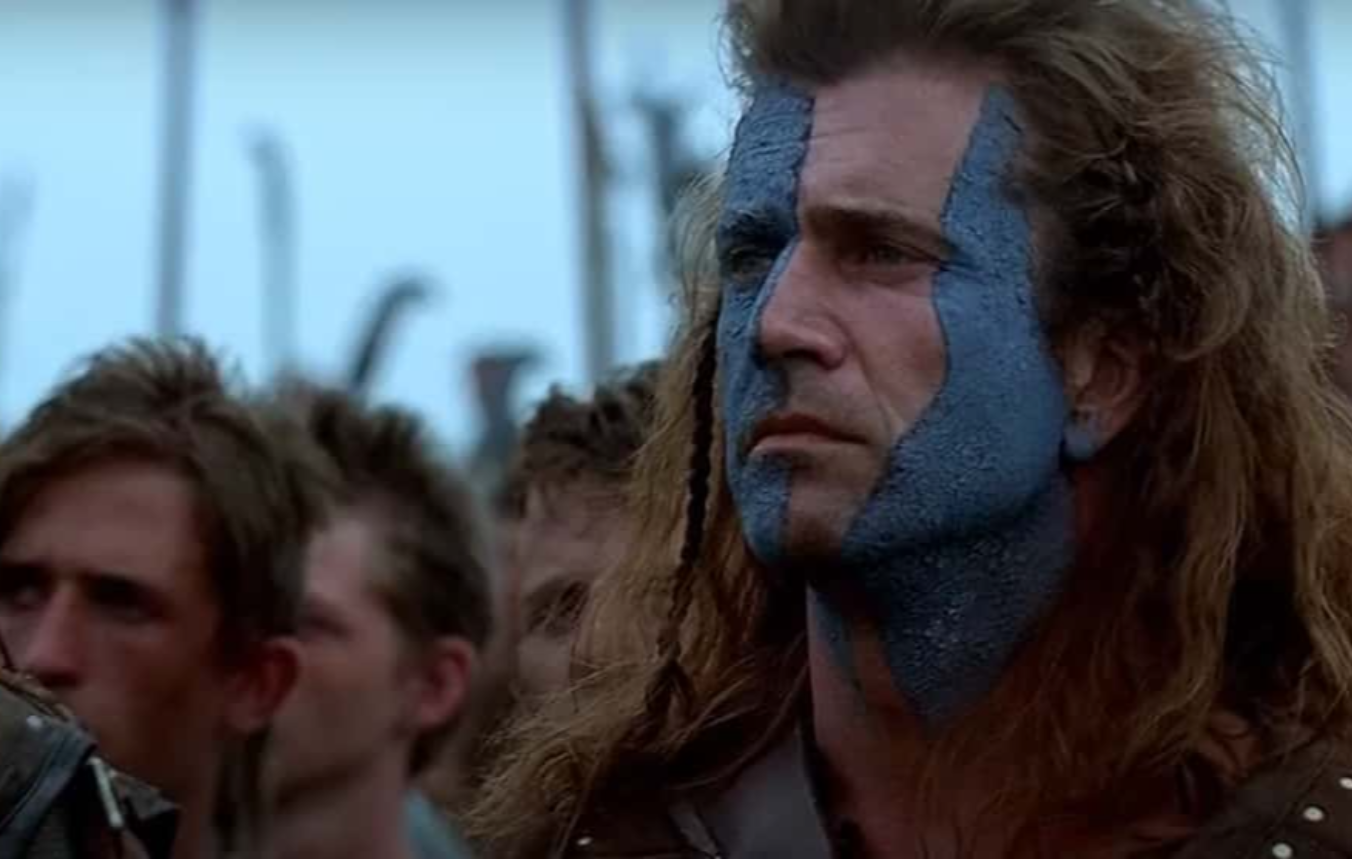 Braveheart, 1995, Paramount Pictures
Braveheart, 1995, Paramount Pictures
24. My Struggle in Song
In 1968, the Scottish folk group known as The Corries released their song “Flower of Scotland” as a tribute to King Robert I Bruce of Scotland. Since then, the song is used as the unofficial Scottish national anthem at international sporting events!
25. See How You Like It!
The great Scottish victory at Bannockburn ended English threats to Scotland, which allowed the Bruce to send raiding parties into northern England, specifically Yorkshire and Lancashire. Luckily, the English didn’t have a William Wallace of their own to repel the invaders.
 Braveheart, 1995, Paramount Pictures
Braveheart, 1995, Paramount Pictures
26. Who’s Paying for all That??
When Bruce was gone, his funeral was a grand affair for Scotland. Nearly 7,000 pounds of wax was bought to make funeral candles!
 Braveheart, 1995, Paramount Pictures
Braveheart, 1995, Paramount Pictures
27. My Heart Will Go On
Interestingly, the heart of the Bruce wasn’t buried with the rest of him. It was taken from his body and placed in a little silver casket that a knight named Sir James Douglas wore around his neck. He took it with him on Army campaigns until his passing. His bones, along with the silver casket containing his king’s heart, were both brought back to Scotland after his passing.
28. My Soul’s in Danger, Lads
Allegedly, on his deathbed, Bruce was a busy man organizing what would happen after he passed. Aside from political decisions, he also bestowed many charitable gifts to religious organizations throughout Scotland, so that they might pray for his soul after he passed. To be honest, given all that he’d done in his life, we’re not too surprised that he had a guilty conscience.
 Pexels
Pexels
29. A New Adventure
Fresh from his success at Bannockburn, the Bruce was confident enough to undertake a foreign invasion. He sent his brother, Edward, to Ireland with just over 5,000 Scotsmen in 1315—though the Bruce himself would join him temporarily later on in the campaign.
Outlaw king,2018, Sigma Films30. A Man Can Dream, Can’t He?
One reason why the Bruce ordered an invasion of Ireland was because Bruce envisioned a Gaelic alliance of sorts against the English. Both the Irish and the Scots had had to deal with the English invaders, so it made sense to combine and unite. Unfortunately for him, most of the Irish rolled their eyes at his high-minded reasoning and viewed the Scots as just new invaders with different accents.
31. Win Some, Lose Some
Sadly, despite several victories, a famine hit Ireland in 1317—one that was overshadowed in history by a much worse famine centuries later. As Robert’s younger brother Edward made enemies among the locals by raiding food supplies, the outnumbered Scottish army was ultimately defeated by the English and their Irish allies. Edward was ended in 1318 at the Battle of Faughart. No doubt that put a damper on Robert the Bruce’s day when he found out.
 Outlaw king,2018, Sigma Films
Outlaw king,2018, Sigma Films
32. A Rival After My Own Throne
When it came to a rival for the throne of Scotland, Bruce couldn’t have picked better—or worse—than John Comyn. Comyn was the most powerful nobleman in Scotland, he had a better reputation amongst the Scots for his consistent resistance of the English—Bruce, meanwhile, had flip-flopped. He was also related to John Balliol, the latest king, and he was related to nobles in England and Scotland alike.
33. In a Church?!
Things finally came to a head between Bruce and John Comyn on February 10, 1306. Both men met in the Chapel of Greyfriars Monastery in Dumfries. Bruce accused Comyn of treachery against him, and the shouting match soon turned into blows between the two men. Sources differ on what exactly happened, but what they agree on is that Bruce hurt Comyn in front of the high altar, and Comyn passed.
34. So… Do They Cancel Each Other Out?
This kind of sacrilege was bad for the Bruce, and he was quick to go to one of his allies, Bishop Robert Wishart. The Bishop absolved Bruce of his sin of ending John Comyn in a holy place, and he even urged the clergy of Scotland to support Bruce’s campaign for kingship (which began in earnest now that Comyn was out of the picture). However, Bruce was still excommunicated by the Pope, which no doubt put a serious handicap on his political aspirations amongst the Christian populace.
35. From One Robert to Another
Renowned Scottish poet Robert Burns took the words which Bruce allegedly addressed to his army at the Battle of Bannockburn and adapted them into a poem called Scots Wha Hae. Burns also set this poem to the traditional Scottish tune “Hey Tuttie Tatie”.
36. Vive La France
In a surprising twist, Burns’ poem, and its tune, have become adapted into a Army march, which is titled “La marche des soldats de Robert Bruce” (the March of the People of Robert Bruce). This tune is still played in France, particularly during the Bastille Day Army parade. Thus, the spirit of the Bruce lives on!
 Wikipedia
Wikipedia
37. He’s Been Ex-Excommunicated
King Robert’s prior excommunication after his attack of John Comyn was eventually lifted by Pope John XXII in 1328. Interestingly, despite having been excommunicated for 22 years, Bruce had continued to receive support from the clergy of Scotland during his kingship. It seems that they hated the English more than they feared the wrath of the church!
38. I Feel Ill
Two years before he passed, in 1327, King Robert Bruce is said to have suffered from a terrible illness that a witness declared left him so weak that he could “scarcely move anything but his tongue". To this day, there is no clear evidence what this illness may have been, as there are no personal records by the King nor any statements from his physicians. They seem to have taken doctor/patient confidentiality very seriously in his case. Historians have theorized a range of maladies that may have contributed to his eventual perishing, each one more gruesome than the next, from tuberculosis to syphilis to cancer.
39. The Pilgrim King
King Robert Bruce’s last known journey was a pilgrimage to Saint Ninian’s shrine at Whithorn. Historians are unsure whether this pilgrimage was done to find some drastic cure for his disease, or whether it was the Bruce making peace with God. Certainly, it would have been an awkward prayer as he listed all the sins he had committed during his time being excommunicated.
40. Mistaken Malady
It was widely believed that Bruce had passed of leprosy, and Braveheart portrayed a foreshadowing nod to that belief by making Bruce Sr. completely crippled with the hereditary leprosy so that the character of Bruce is looking into his own future. However, upon extra research and examination into the original casting of the skull belonging to one of Bruce’s descendants, there was no evidence of leprosy, which there should have been, given how leprosy can be passed on.
41. Saved in the Nick of Time
In 1305, while Bruce was planning to mount a coup against the English and claim the Scottish throne, he was visiting the English king at his court. Edward I had allegedly uncovered Robert’s plot, thanks to secret word from John Comyn, and prepared to arrest him before he could leave his court. However, Edward’s own son-in-law, Ralph de Monthermer, decided that Bruce was a better friend than Edward was a better father-in-law—hard to fault him, to be honest. Monthermer sent Bruce a coded message of 12 pence and a pair of spurs. Robert managed to understand the message and immediately fled to Scotland that same night.
42. The Brave Scotsman
According to legend, Bruce was preparing to fight the Battle of Bannockburn when his small party was hurt by a group of English knights. One of them, Sir Henry de Bohun, rode towards Bruce himself, armed with a lance while Bruce was only armed with a battle-ax. Bruce allegedly dodged the lance and swung his ax straight at de Bohun’s head. His blast supposedly caused the ax to break apart, but it also resulted in de Bohun’s head to be split in two! While the jury’s out on whether this moment of heroism happened, the Scottish people have raised the legend up as a part of their national identity.
43. Not a Good Time to Know Him
When King Edward crushed the Scots right after Robert the Bruce was crowned, the Edward made sure Robert felt pain. As bad his defeat was, Bruce got off light compared to his wife, daughter, sisters, and brother. All of them were captured by English forces in the aftermath of Bruce’s defeat at Methven. The women were all cruelly imprisoned, especially in the case of two of Bruce’s sisters, Mary and Isabella. Both were publicly hung in cages for four years. As for Bruce’s brother, Neil, he was hanged, drawn, and quartered—much like William Wallace had been.
 Braveheart, 1995, Paramount Pictures
Braveheart, 1995, Paramount Pictures

